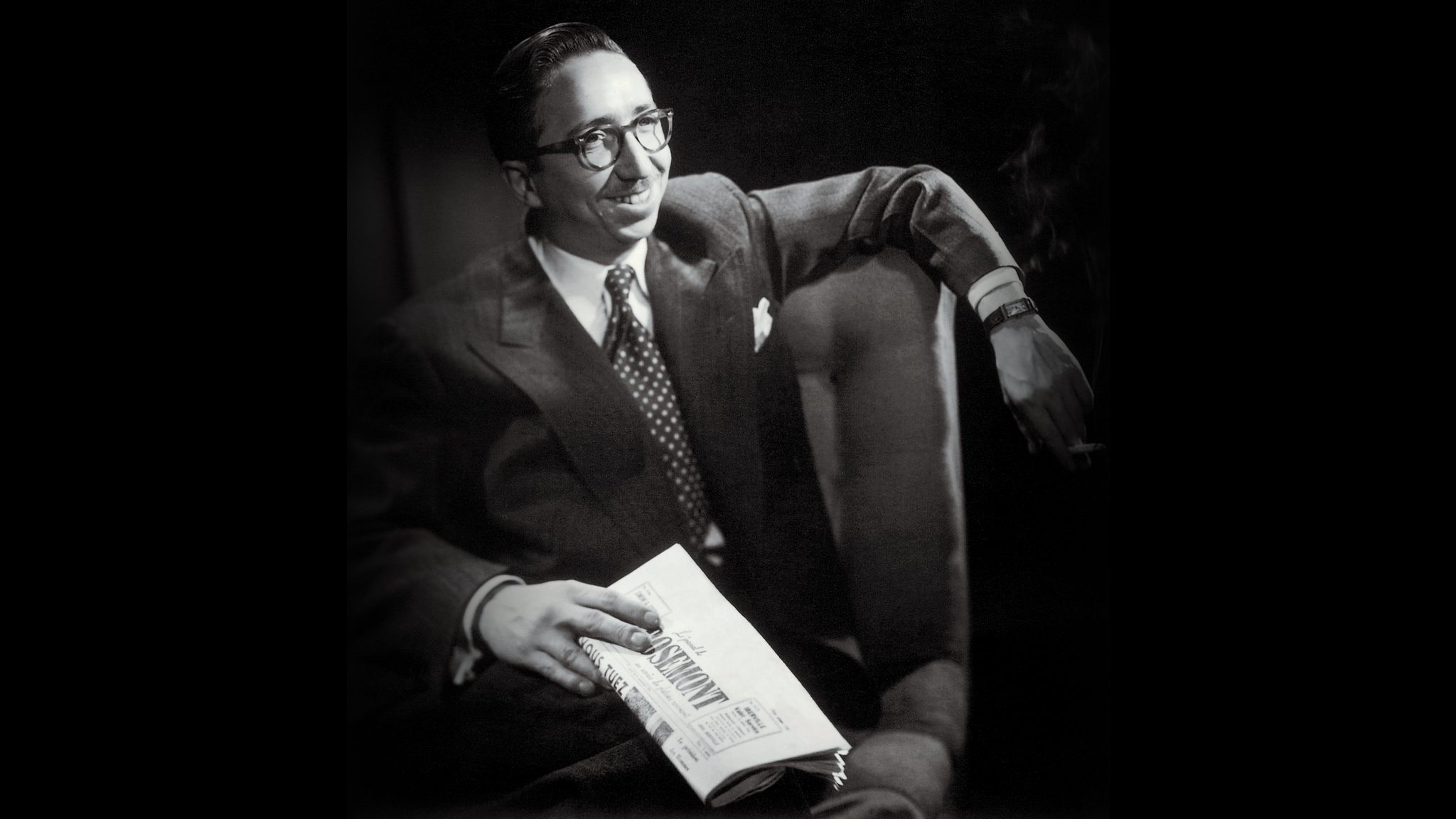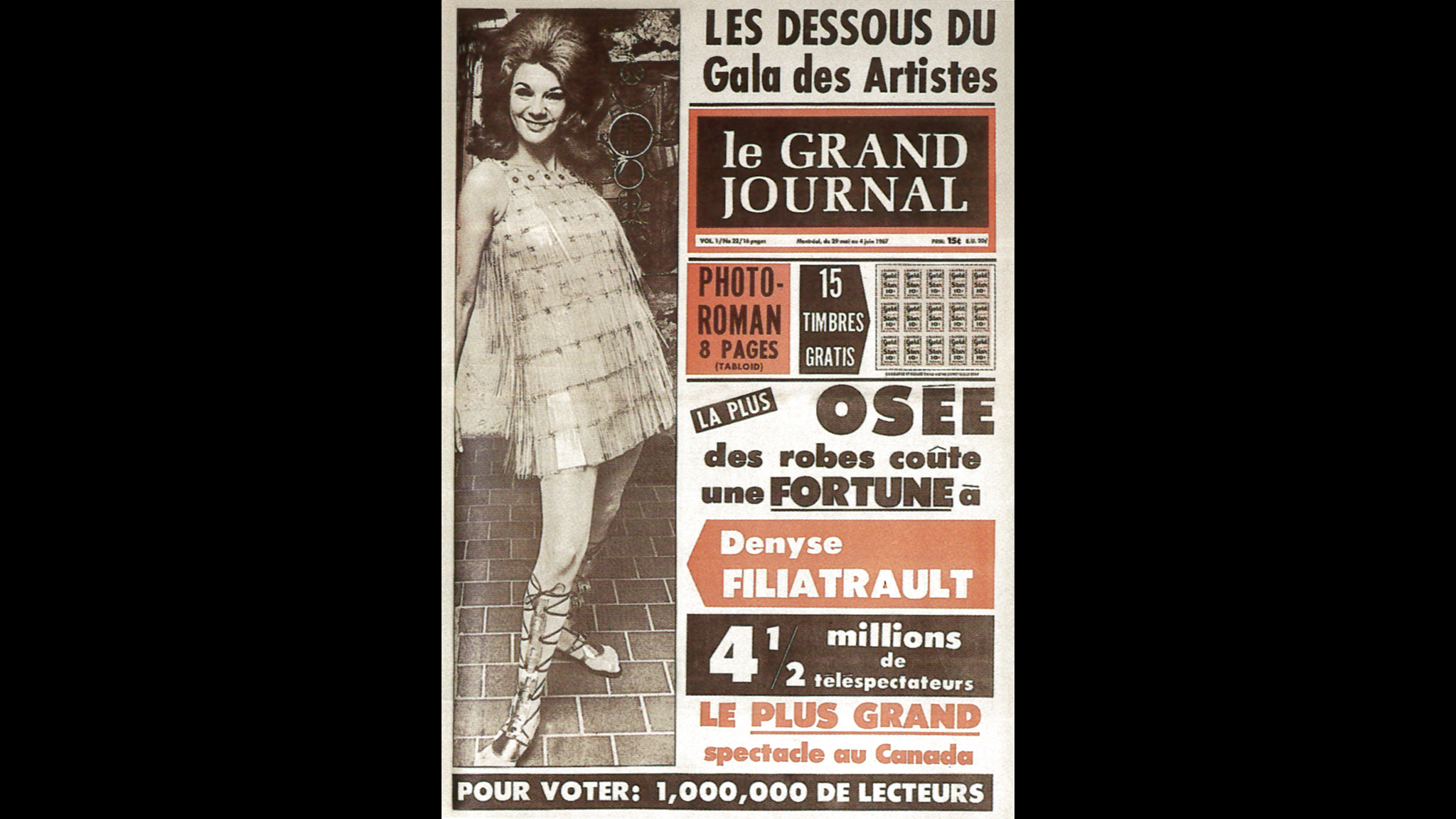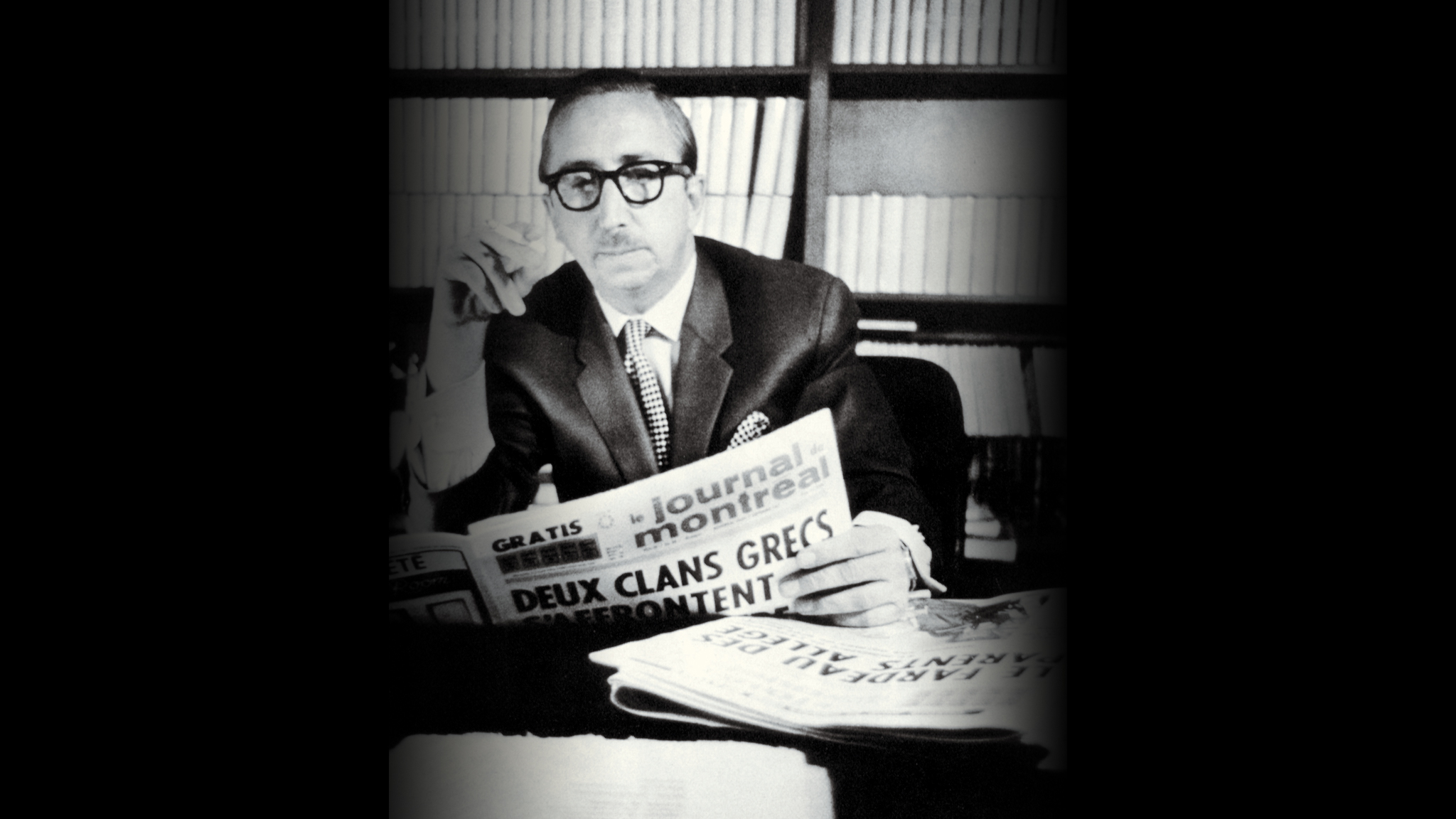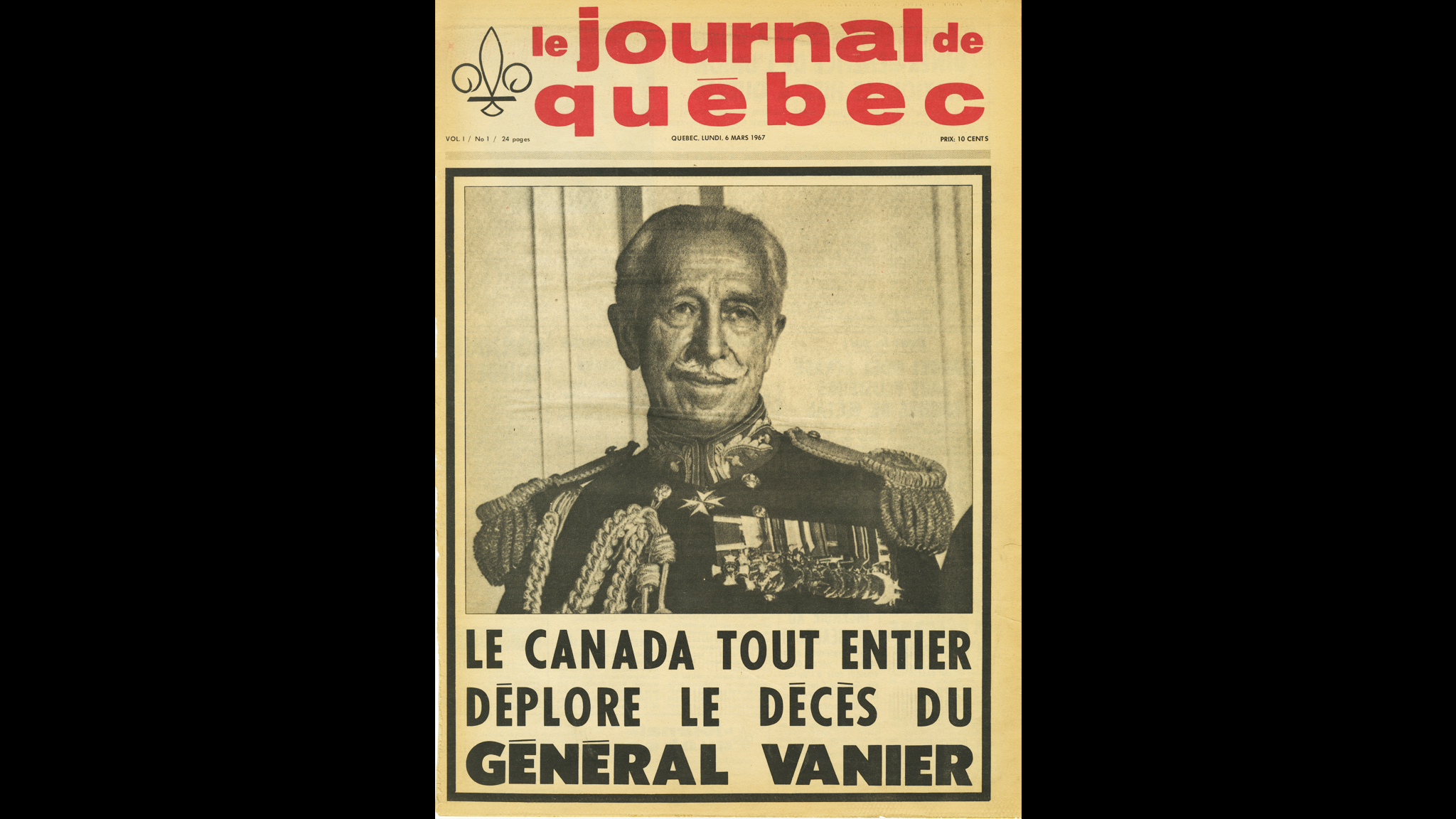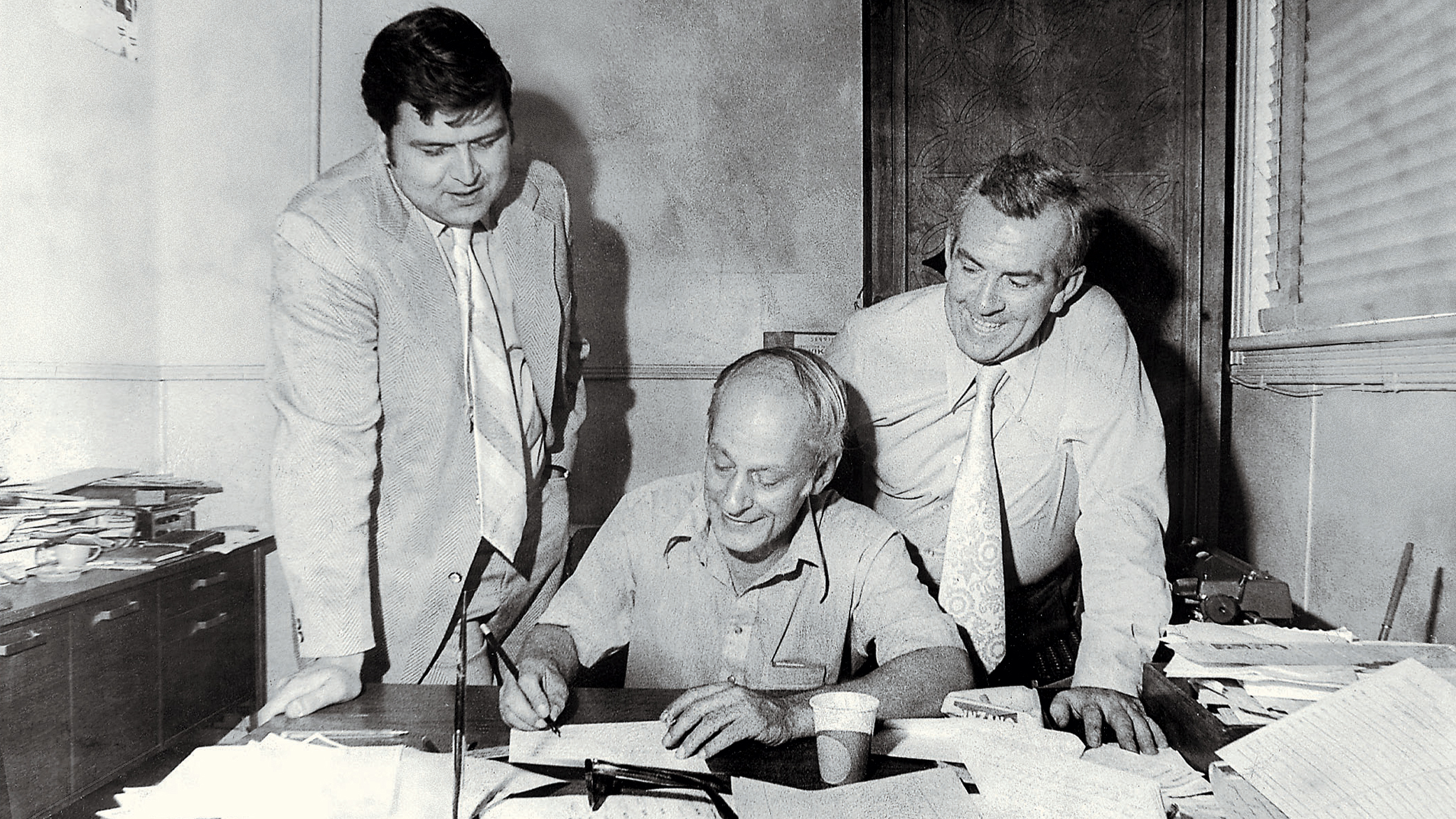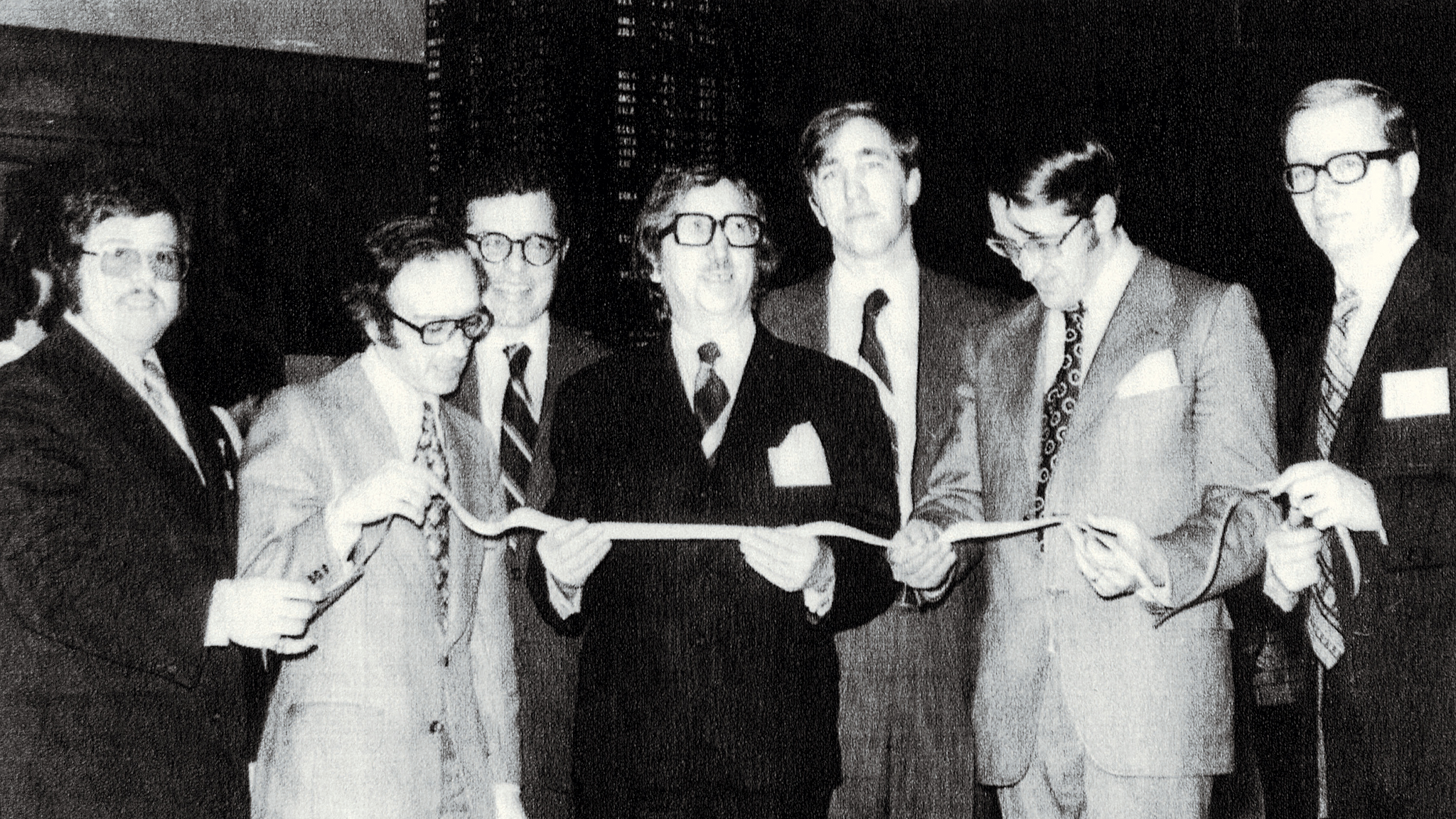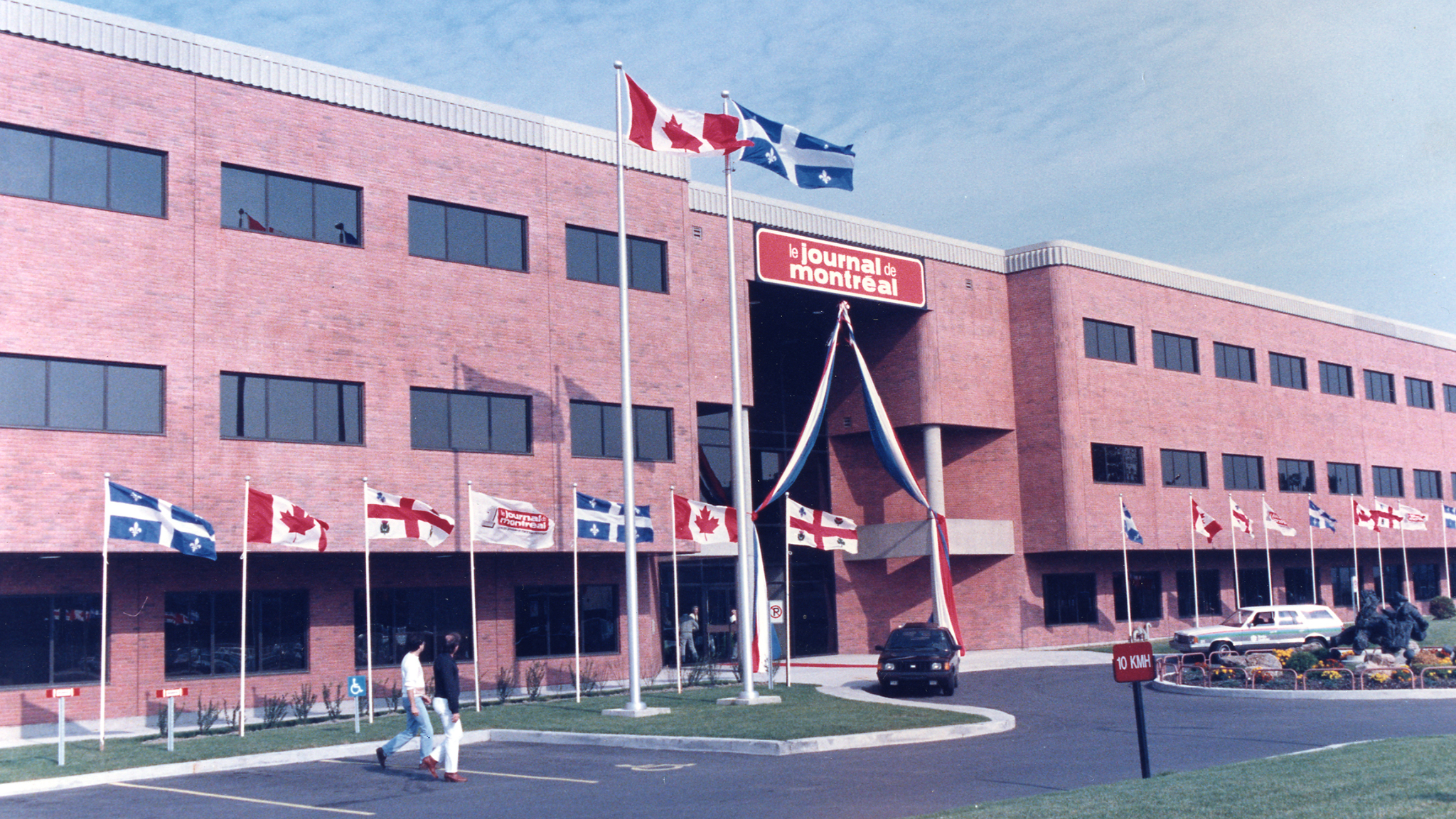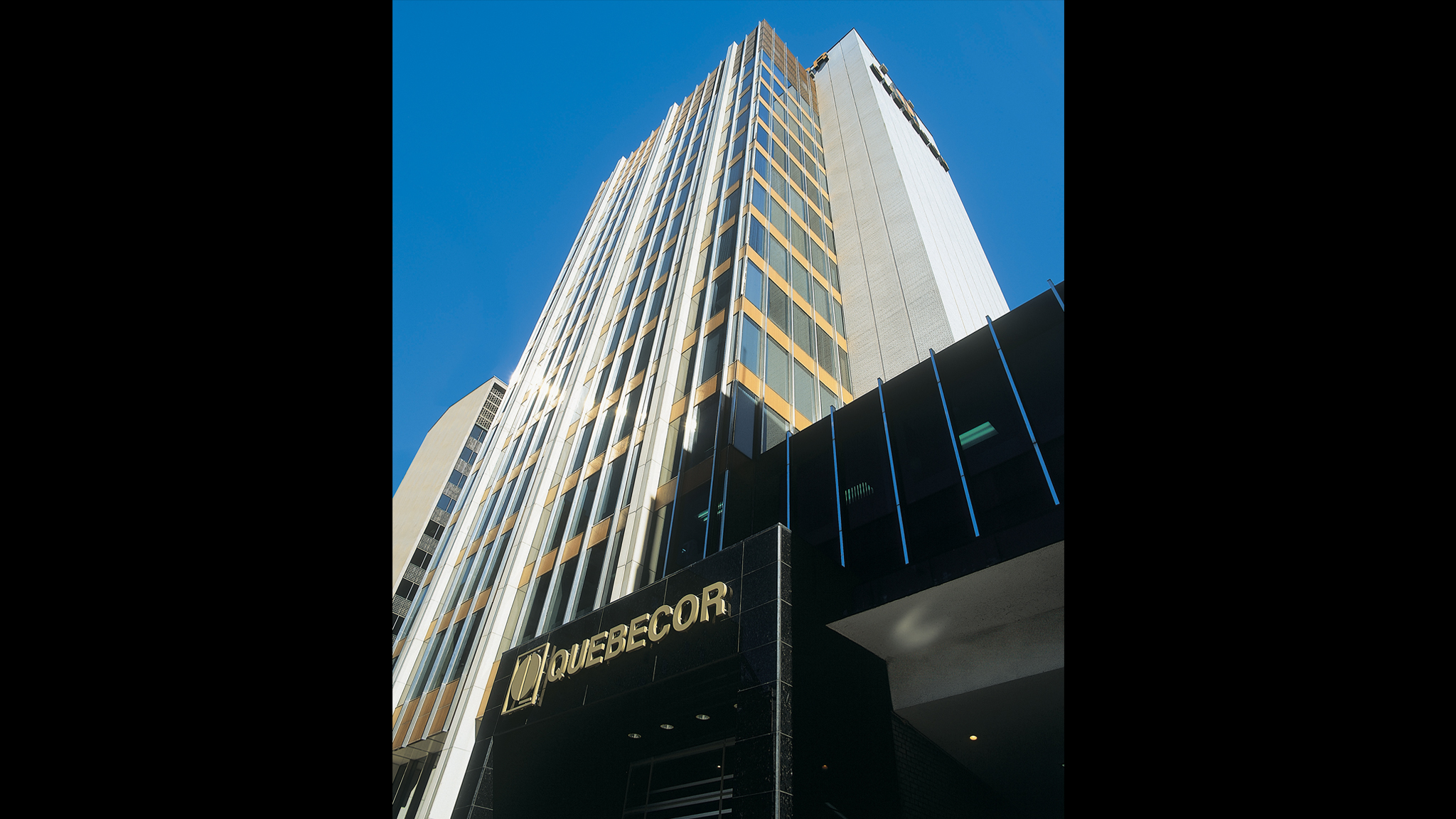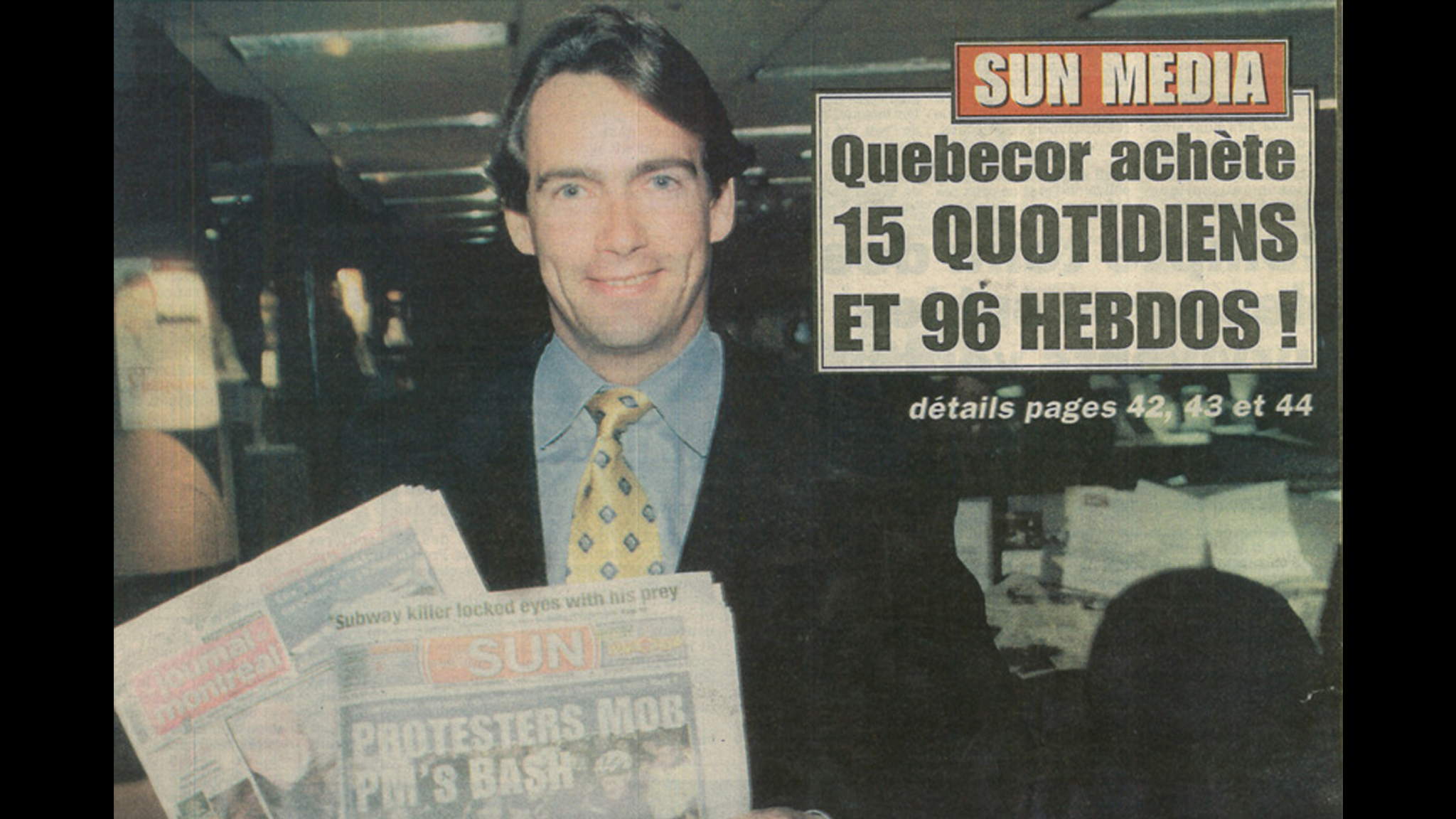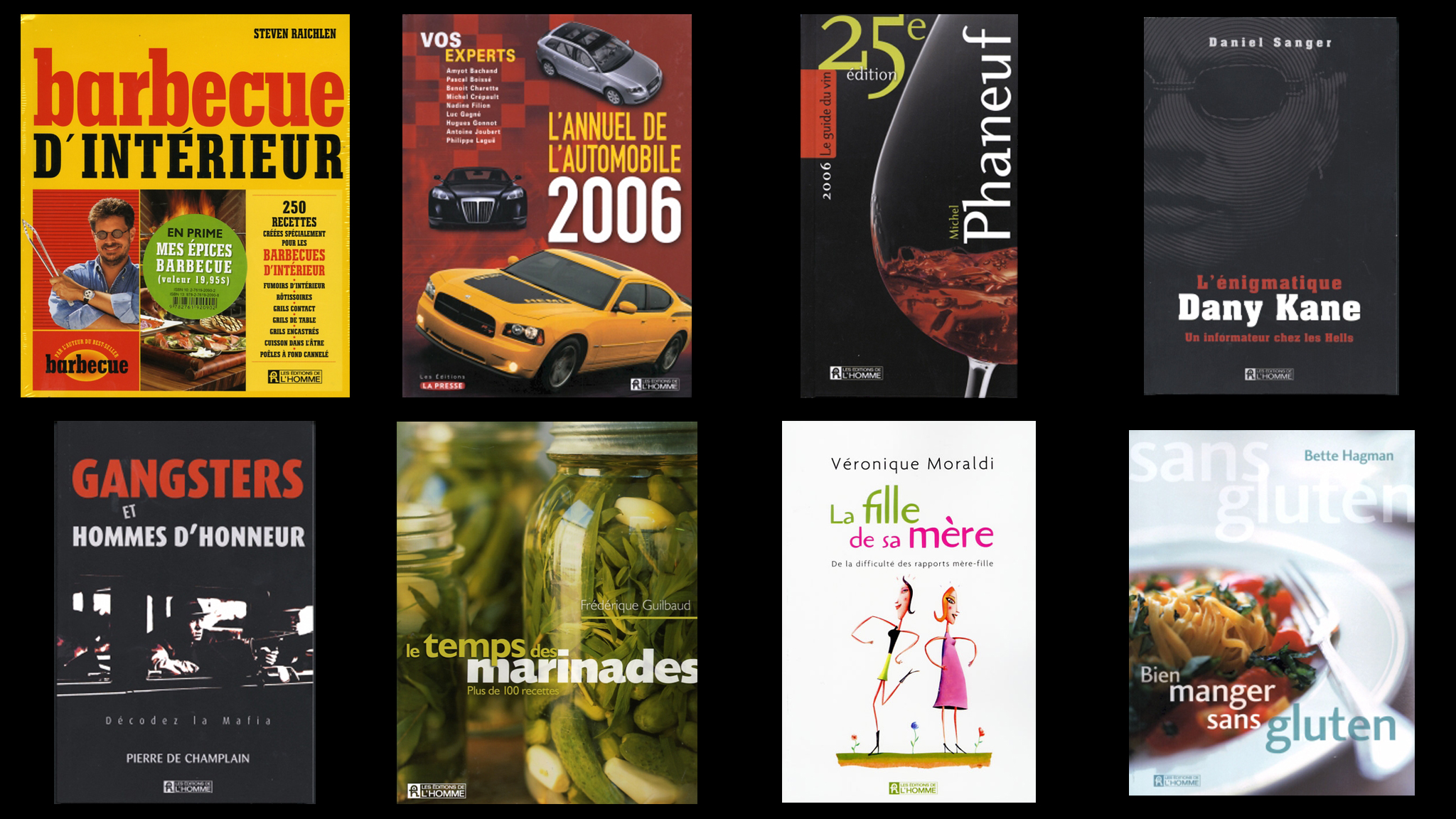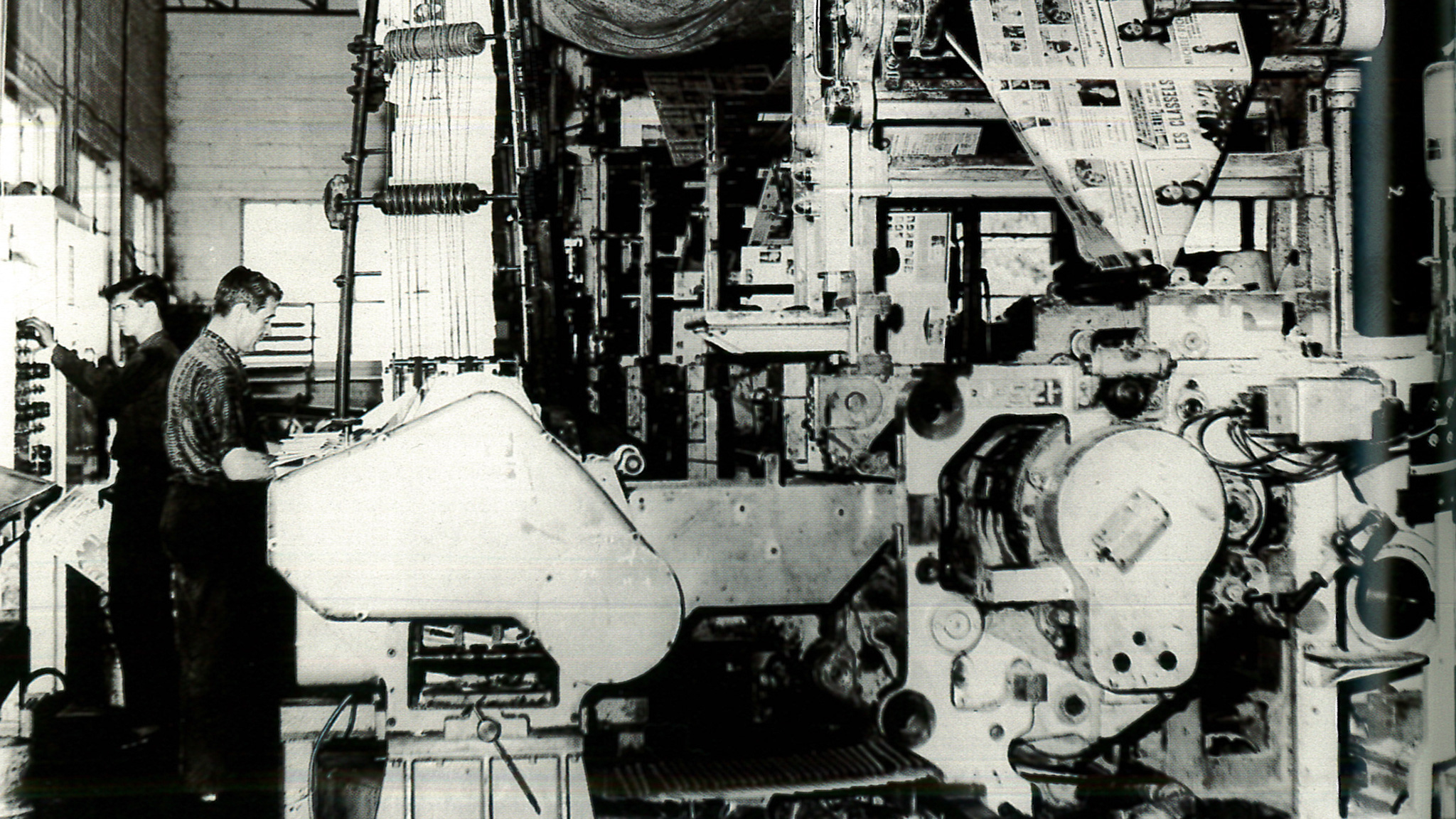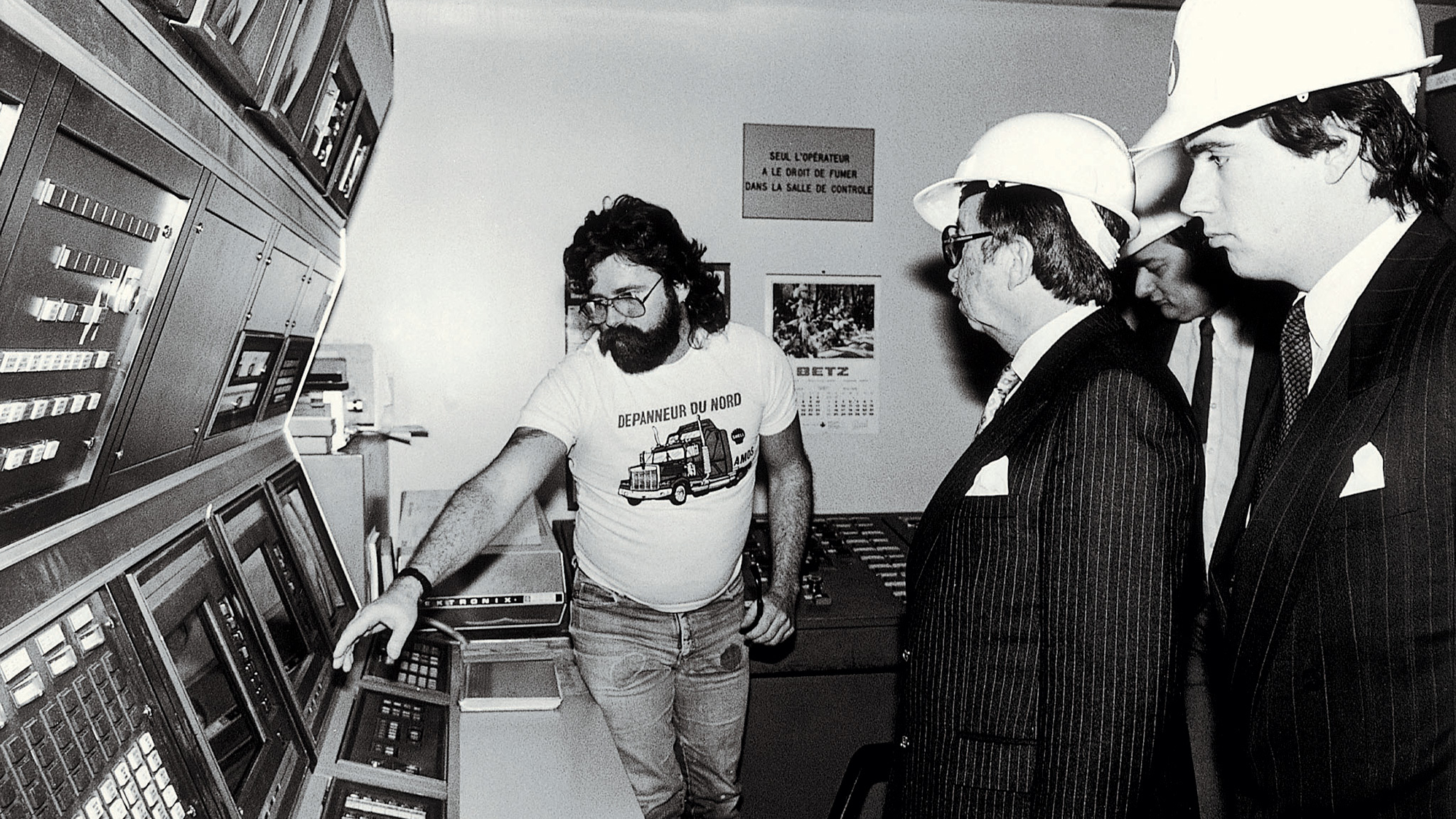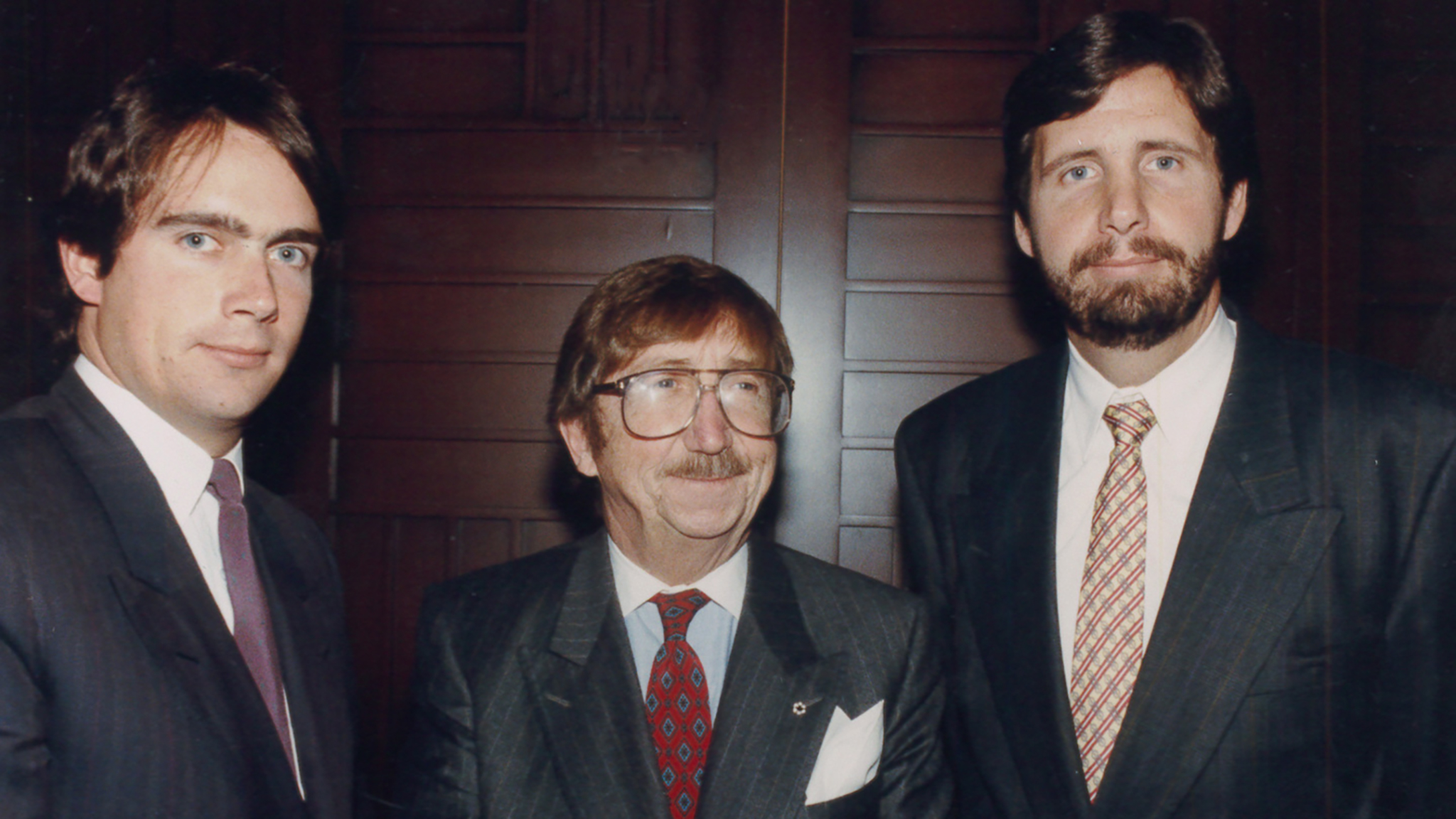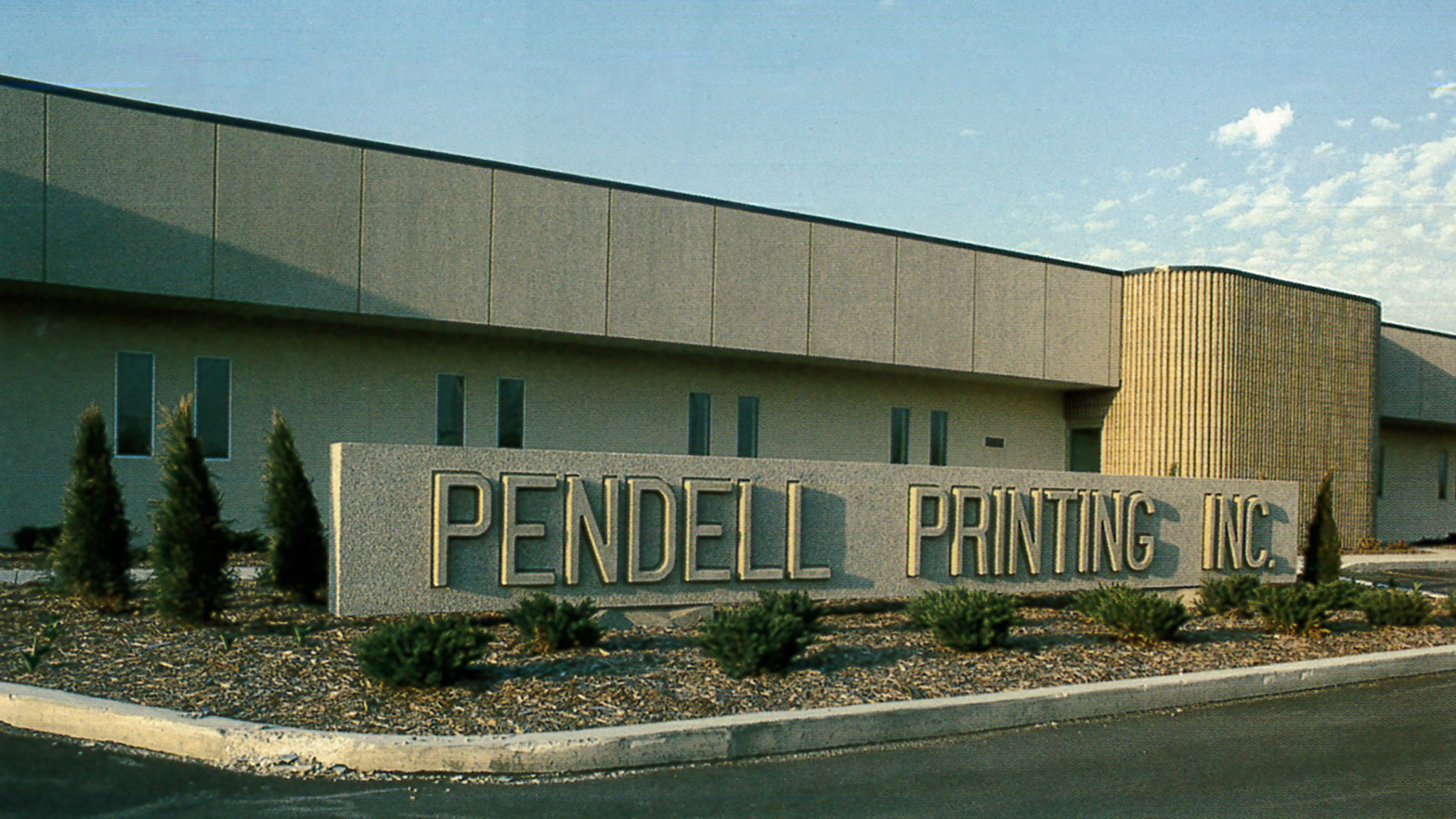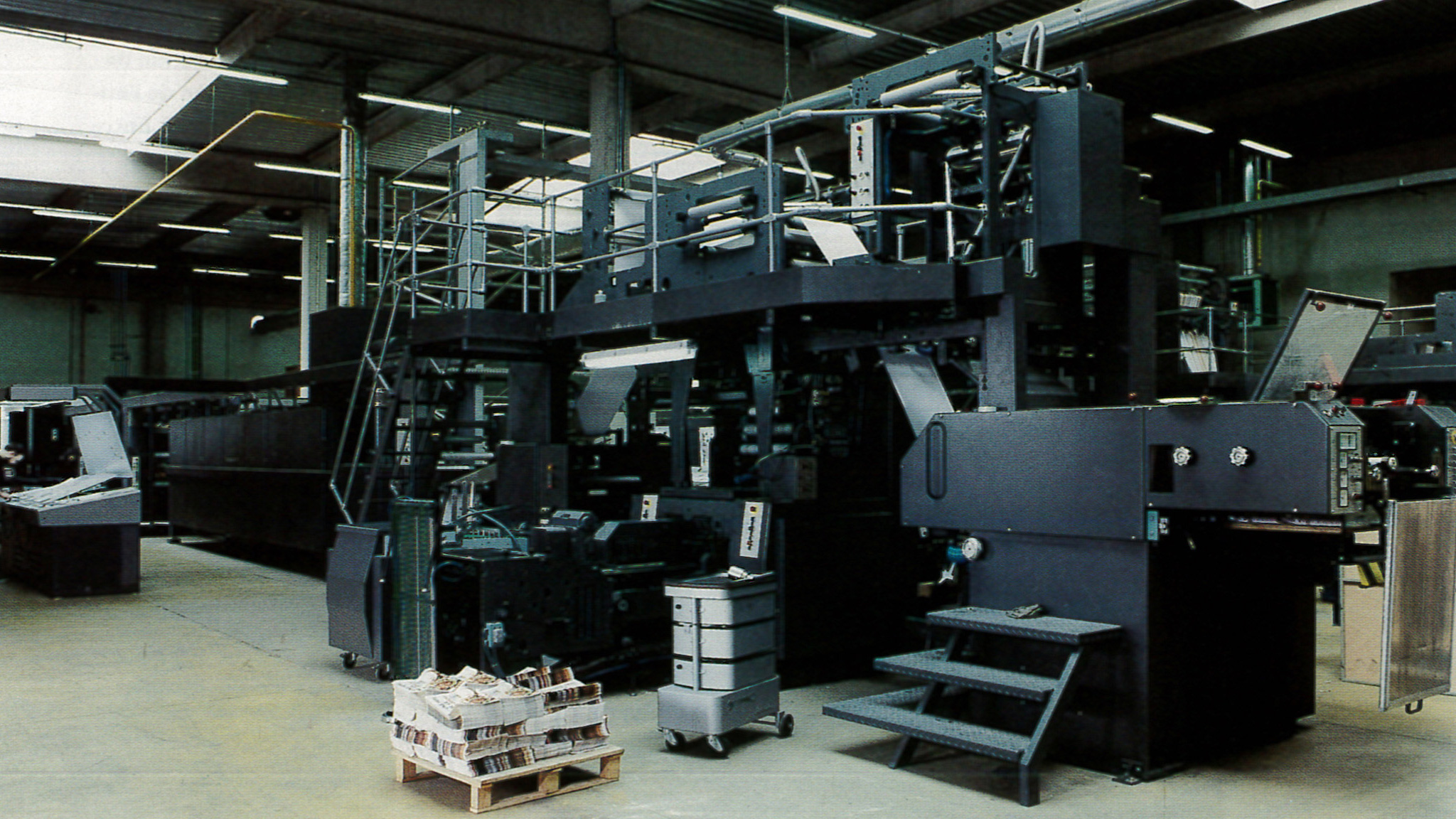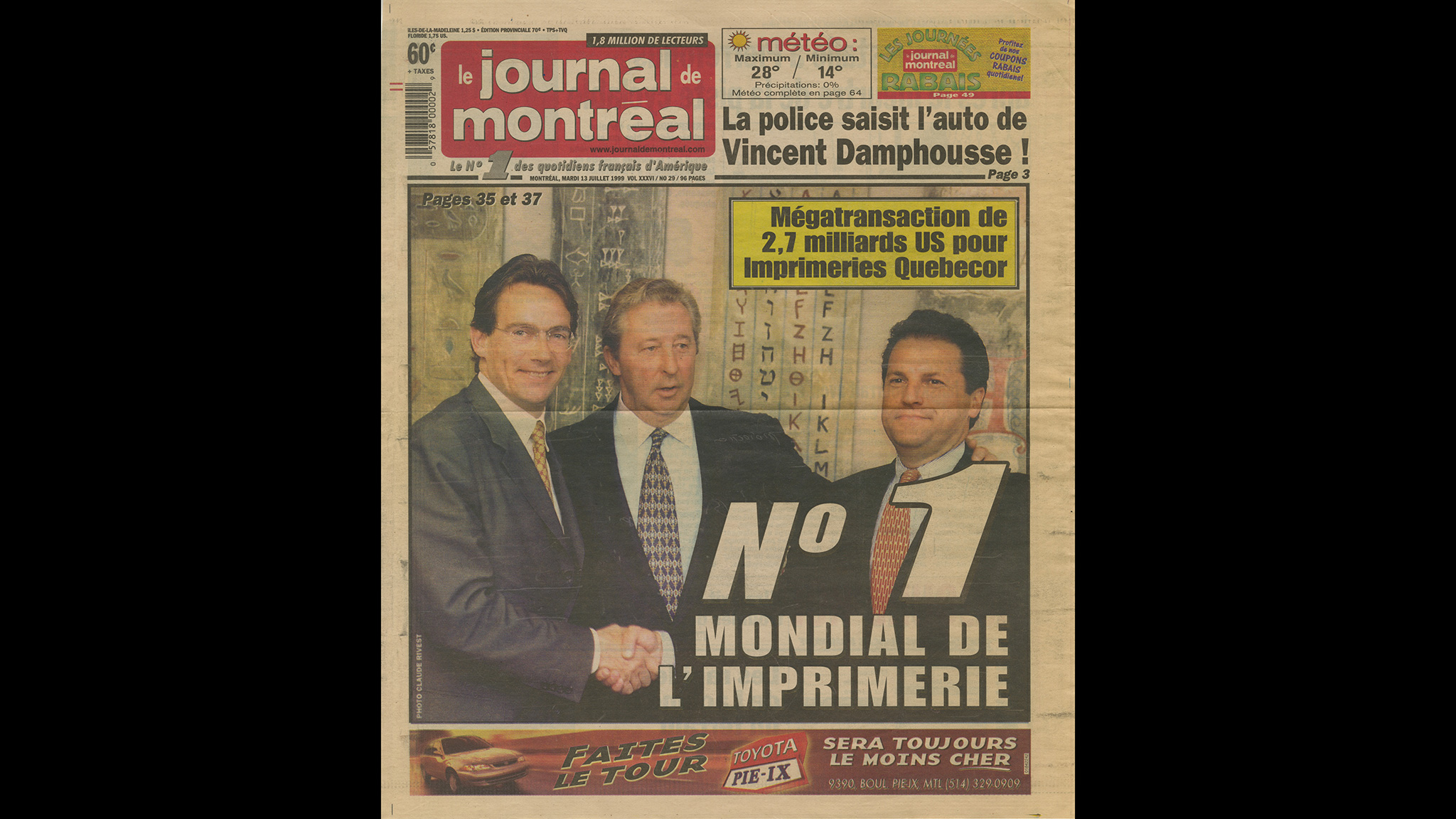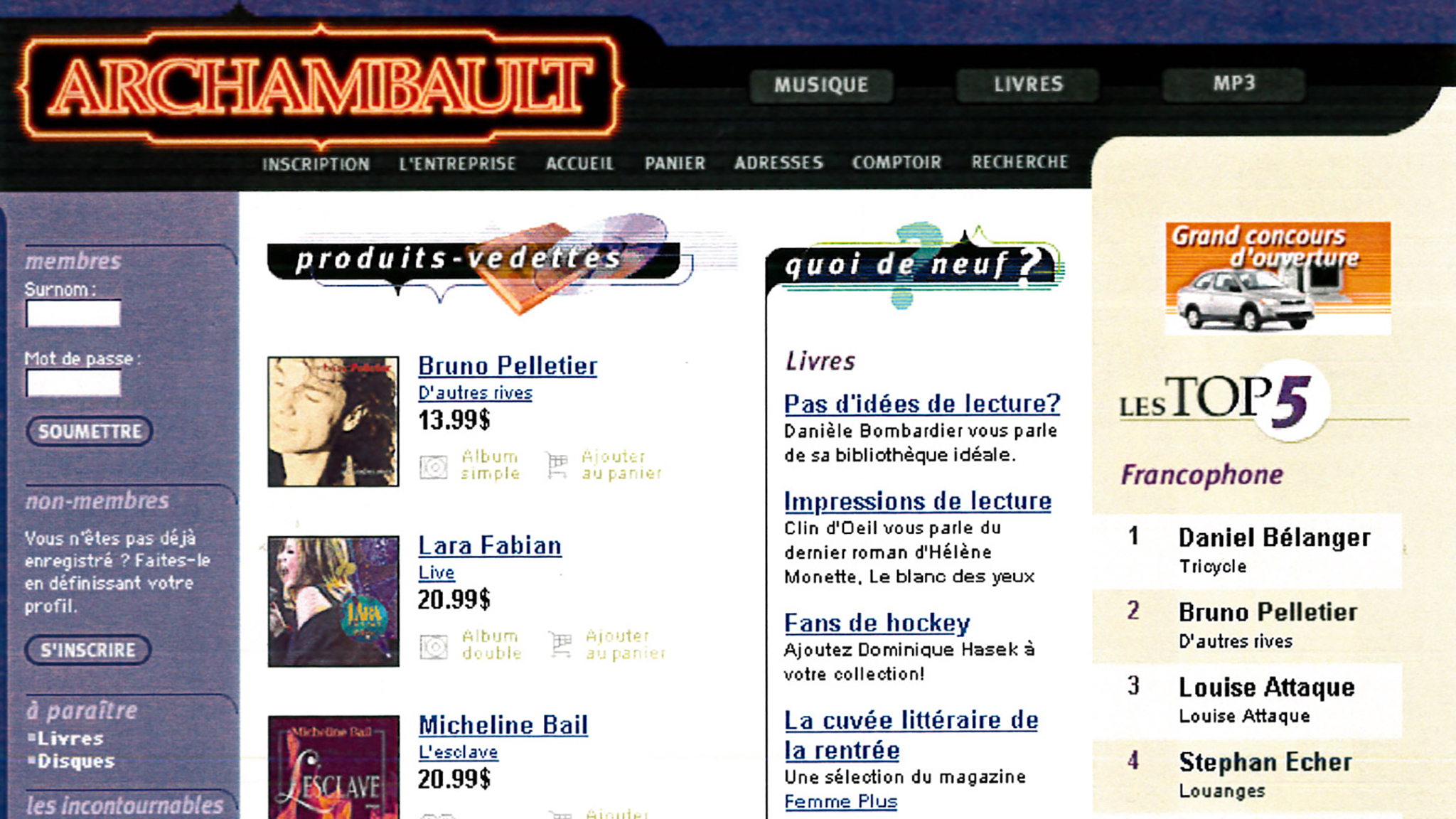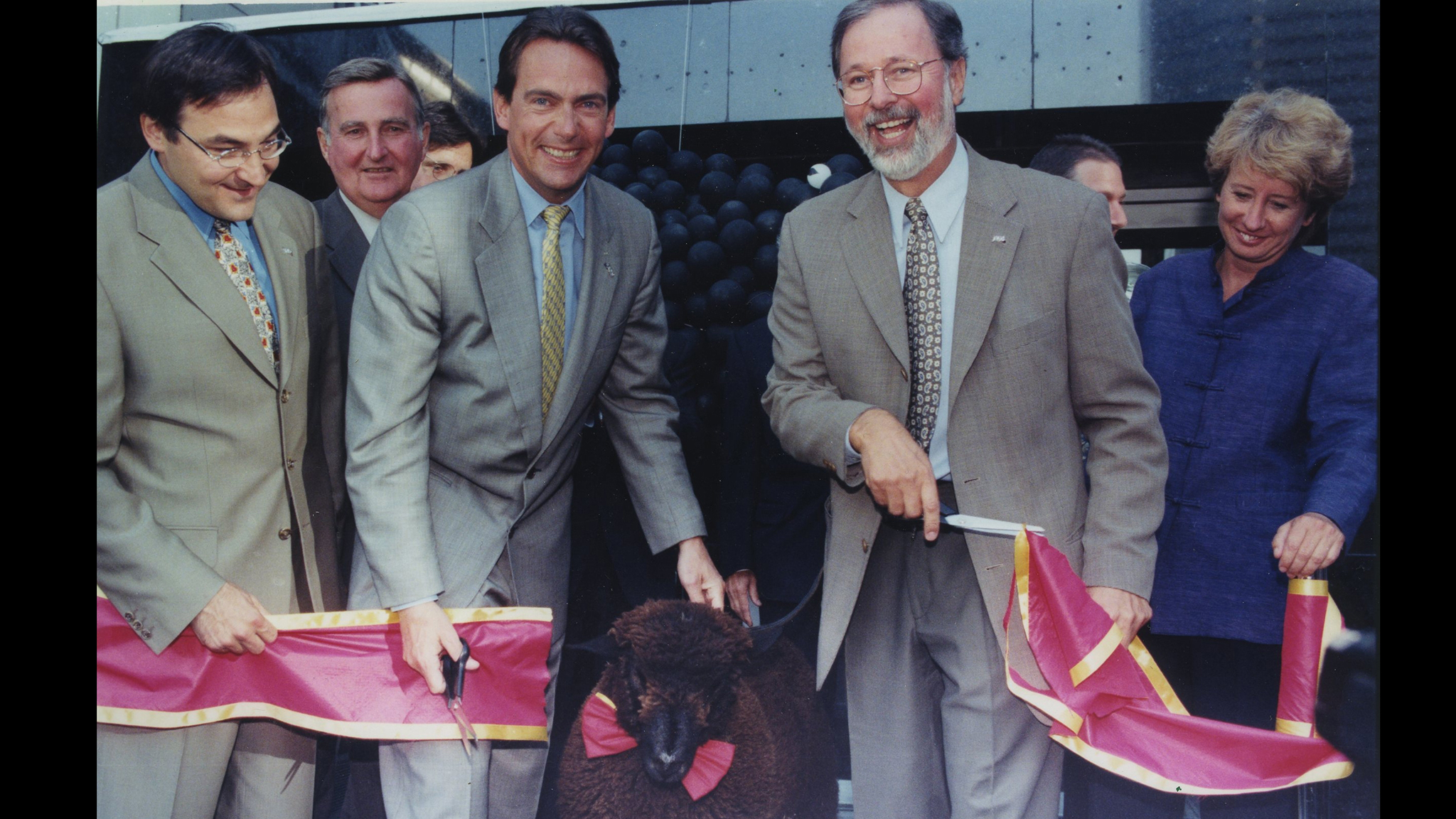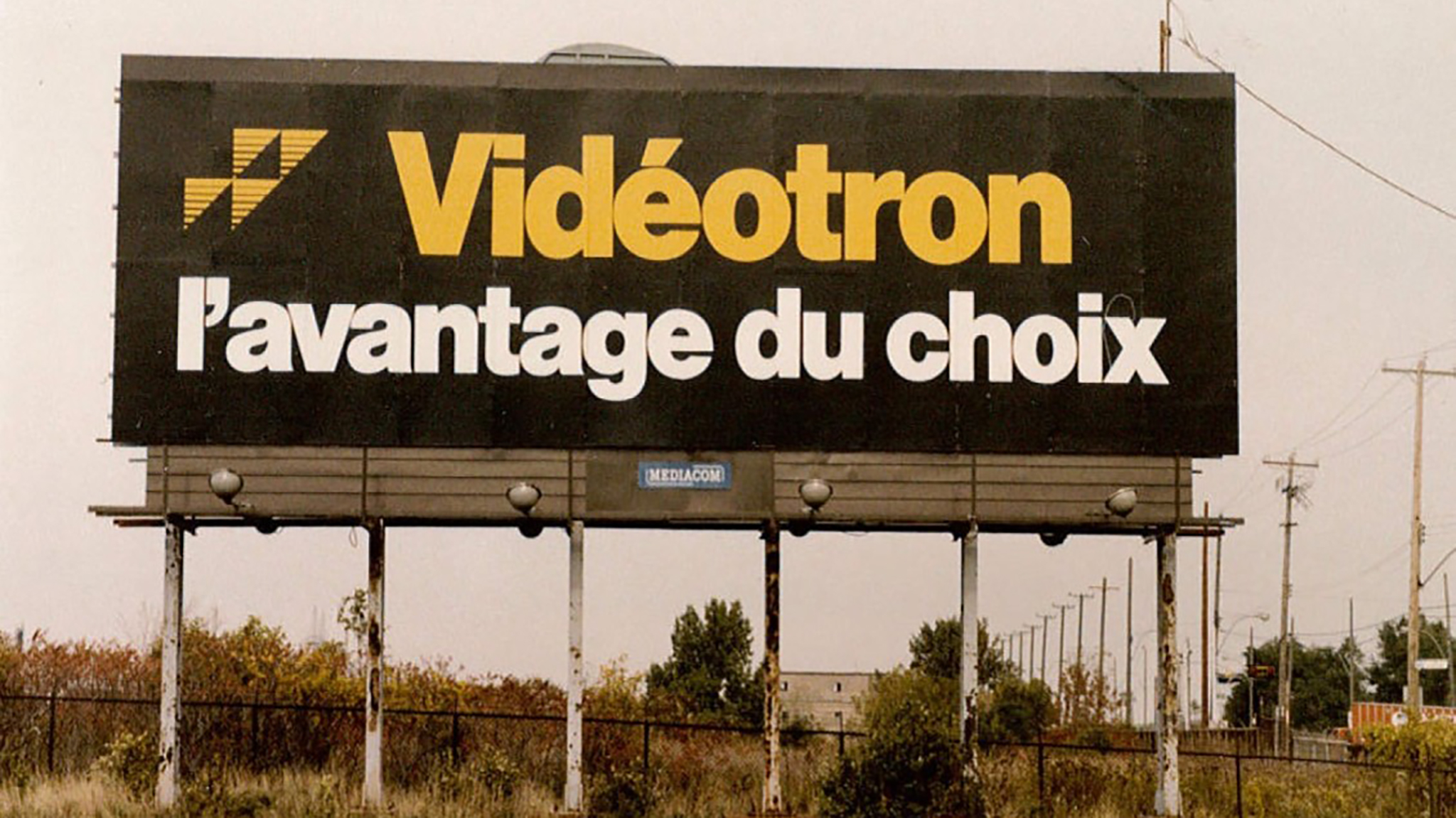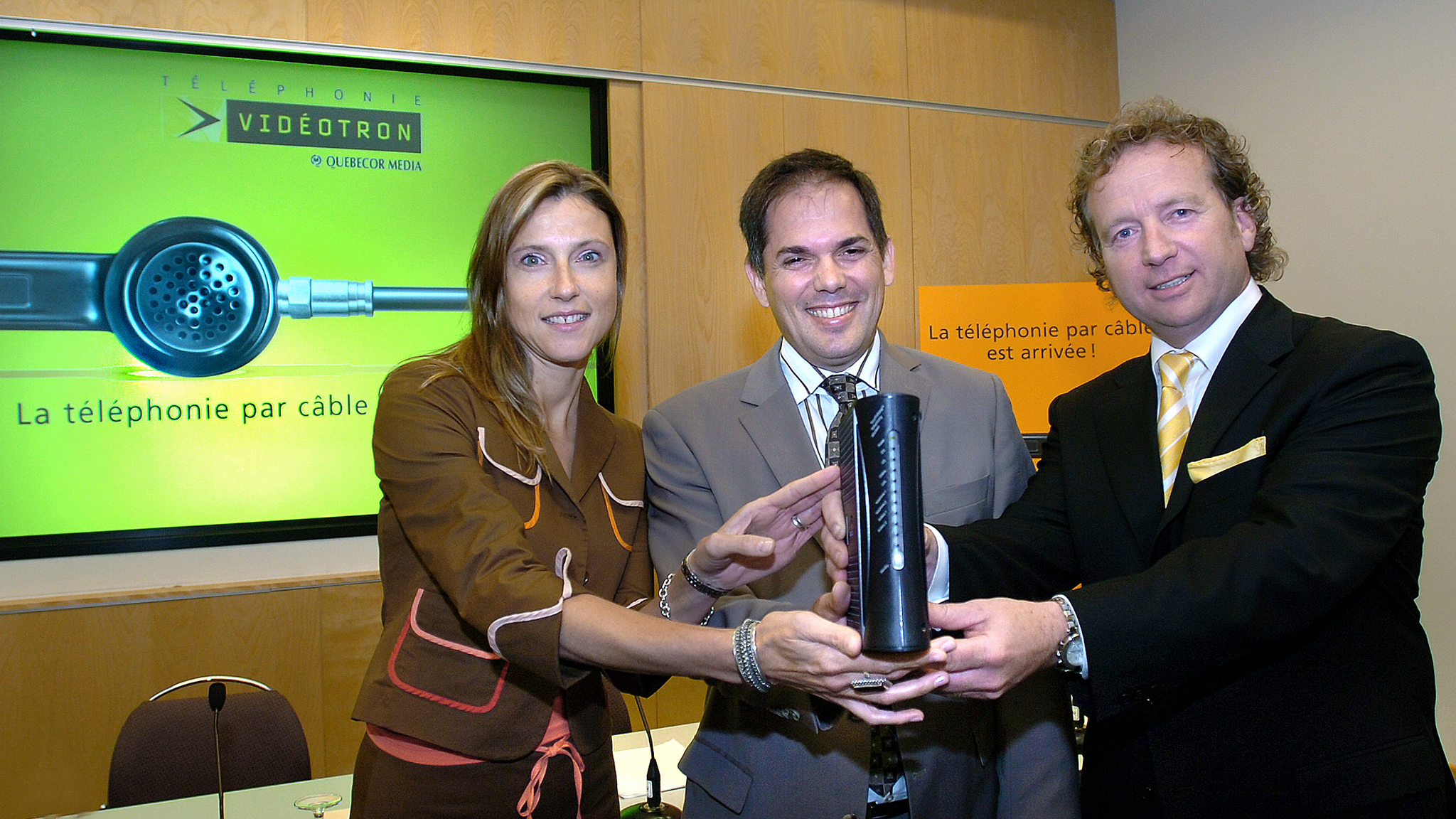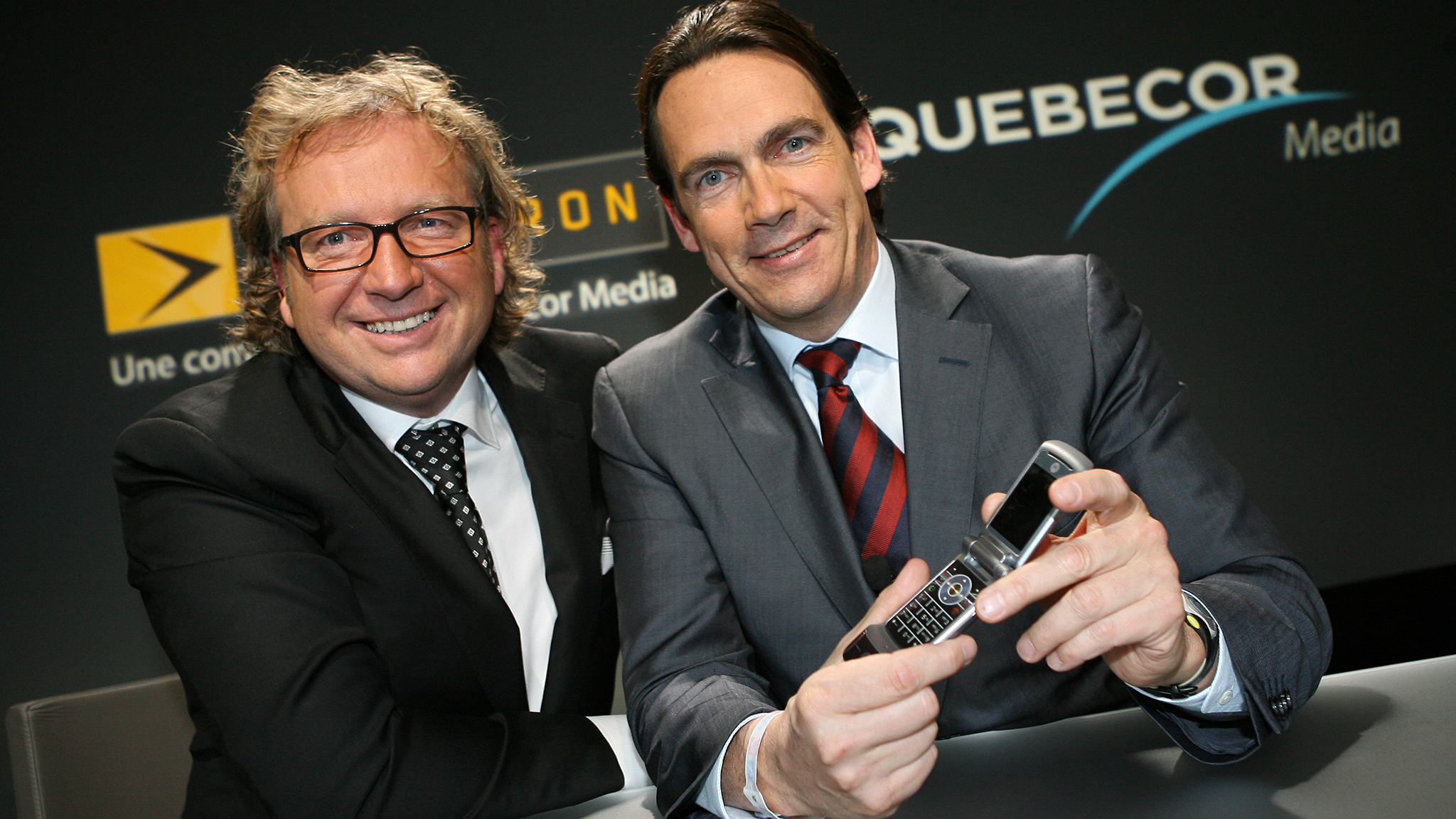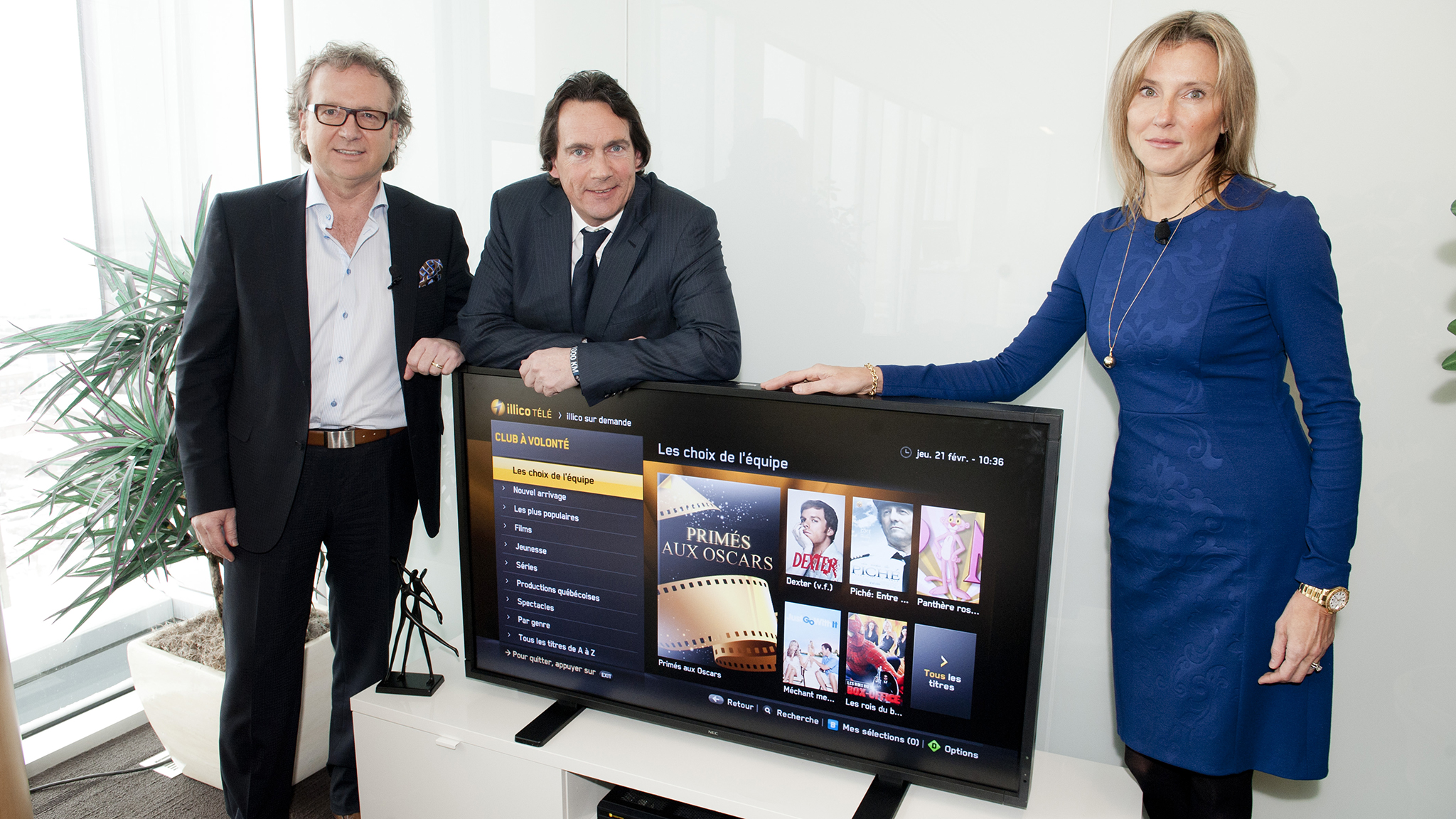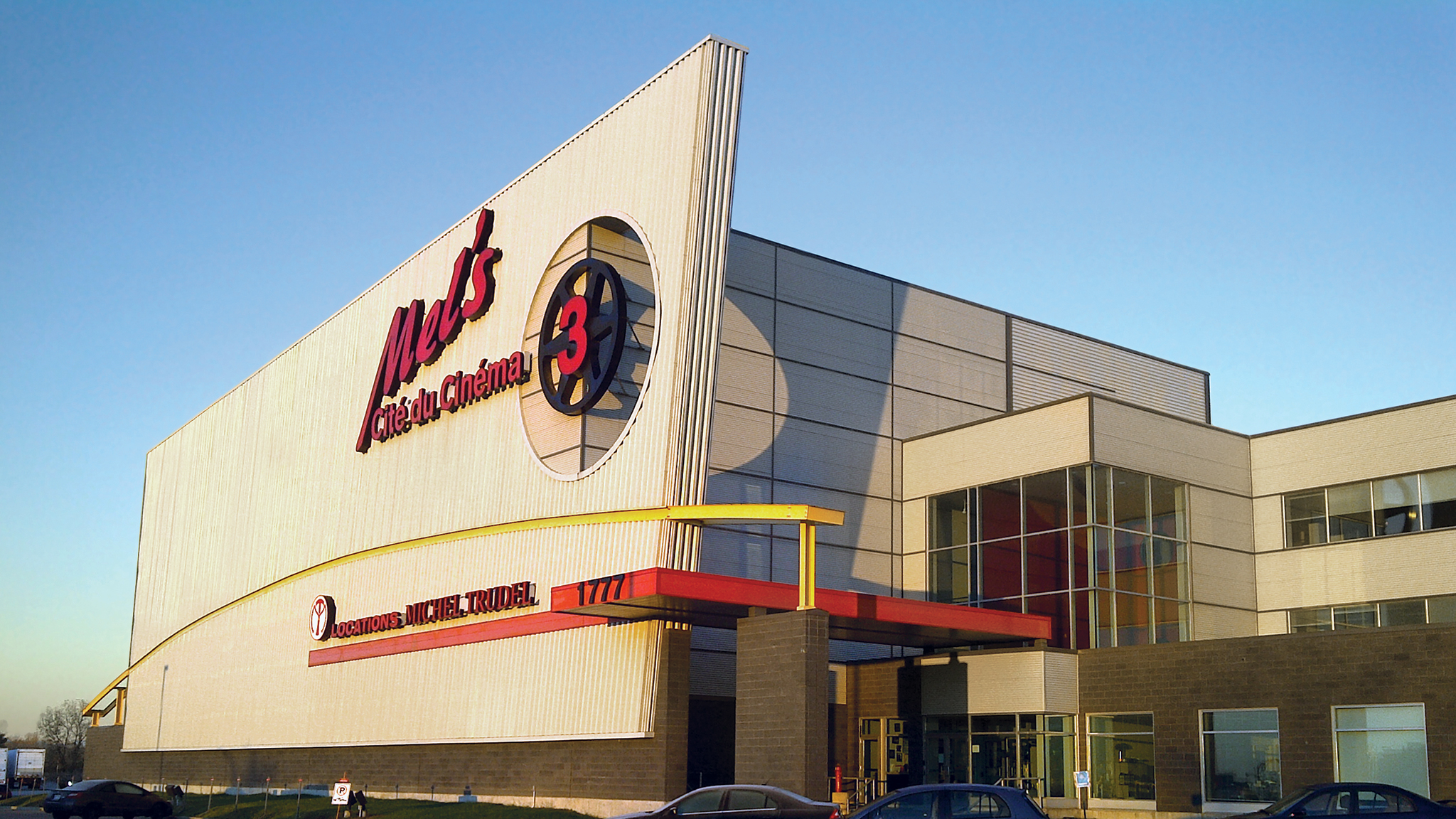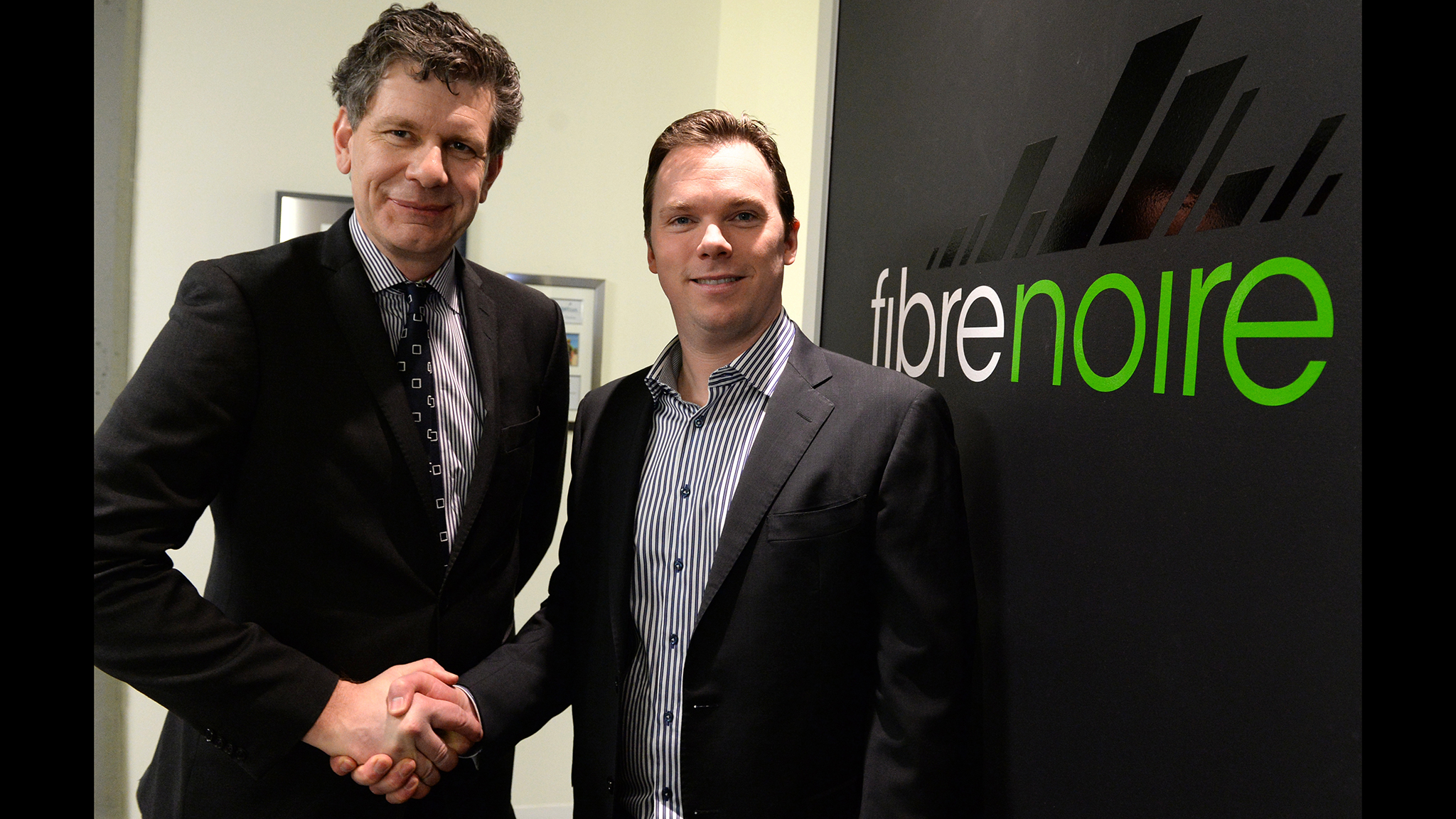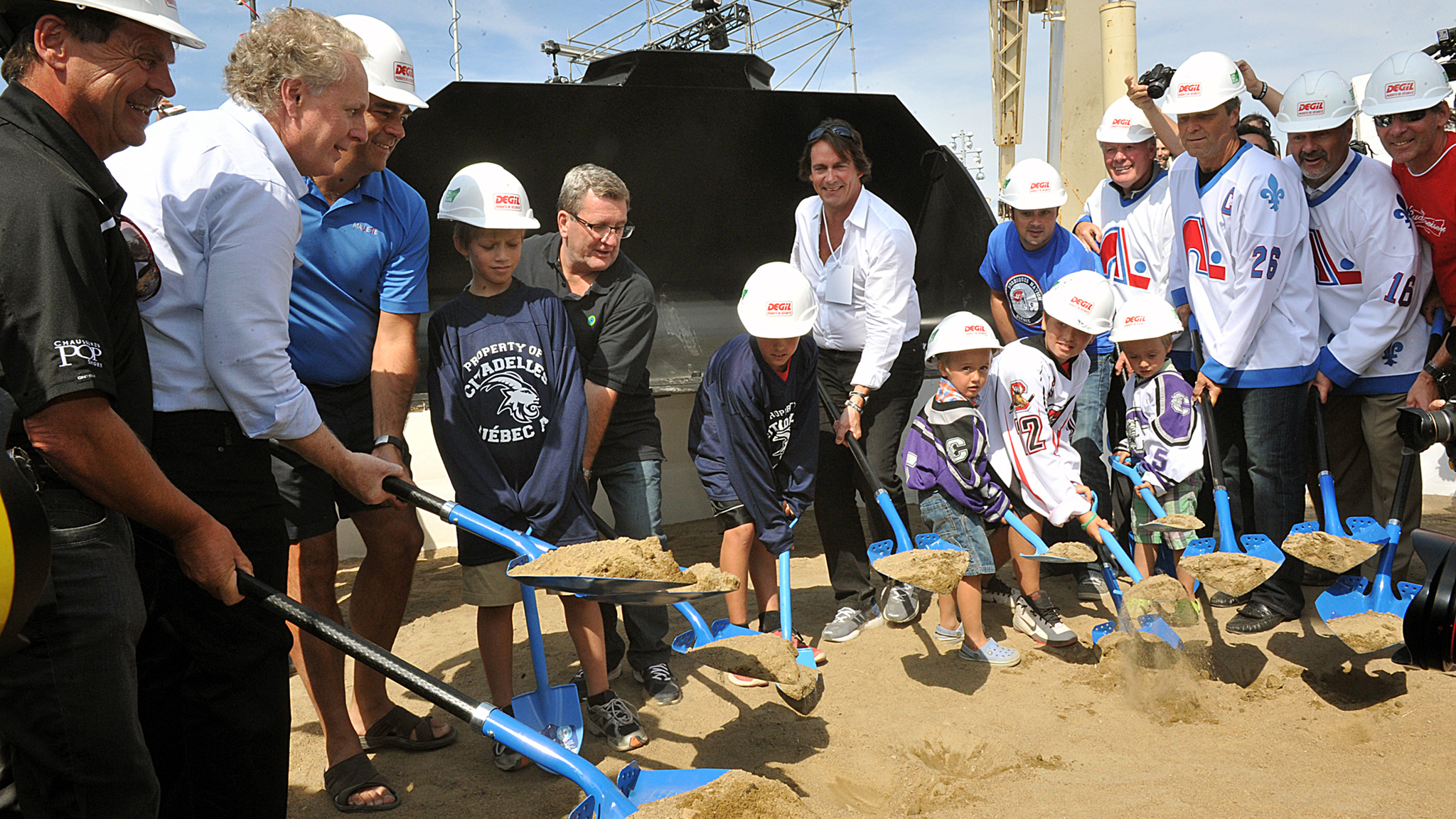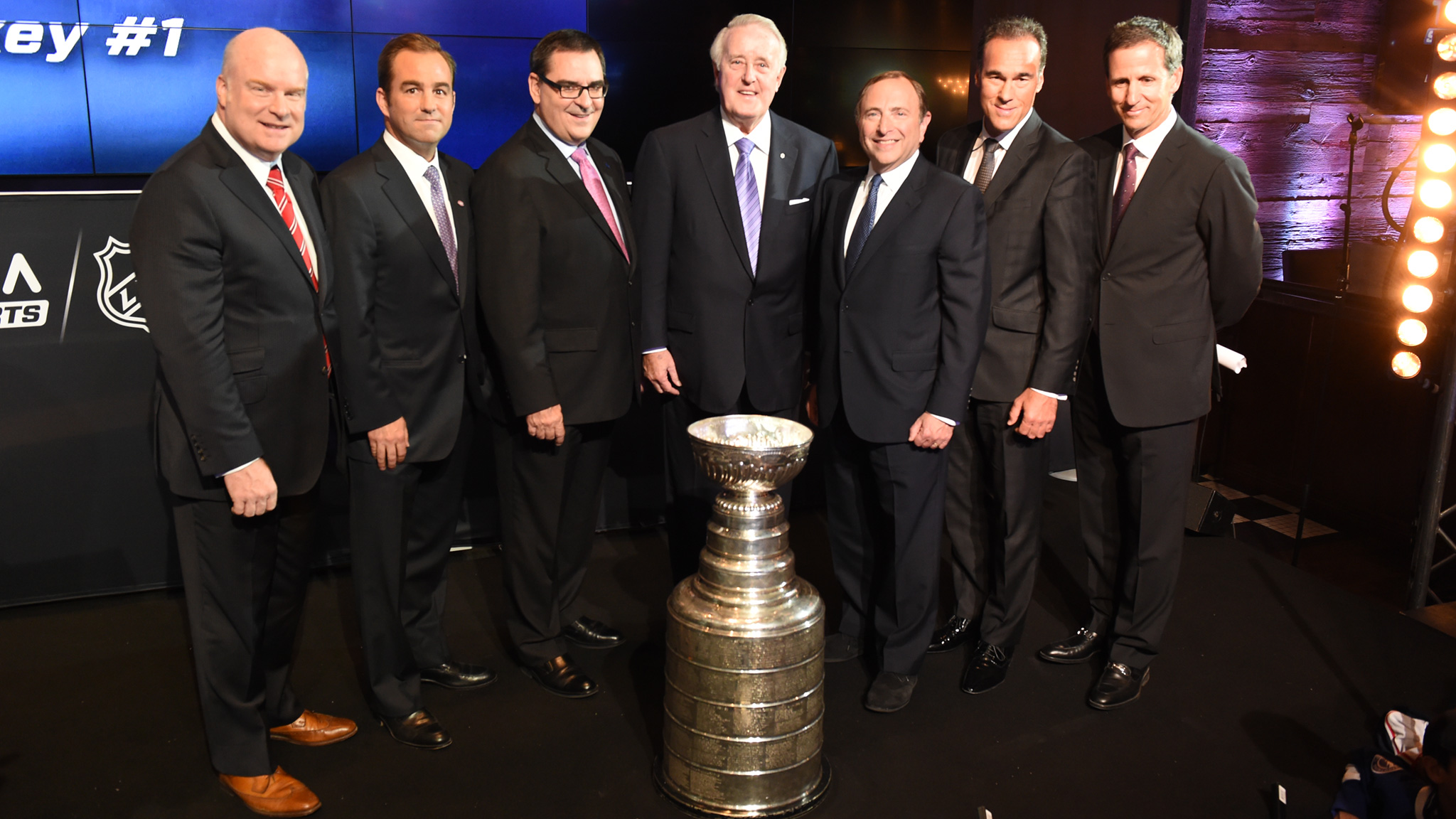It all began with the acquisition of a neighbourhood newspaper…
At age 25, Pierre Péladeau had no thought of going into publishing. But through a fortuitous combination of circumstances, Raymonde Chopin, his girlfriend and later his wife, told him that Le Journal de Rosemont, a small struggling neighbourhood weekly, was for sale. With nary a penny to his name, Pierre Péladeau decided to borrow $1,500 from his mother Elmire to buy his first newspaper. To revive the publication, he launched the “Miss Rosemont” beauty contest, which was an immediate success. The year was 1950.

Le Journal de Montréal: Birth of an icon
Looking to start a daily, Pierre Péladeau took advantage of a strike at the newspaper La Presse to launch Le Journal de Montréal in the space of a weekend. The first issue hit the stands on June 15, 1964. It was the first new daily to appear on Québec newsstands in over 30 years. Within a few days, circulation was averaging 80,000 copies. But then the labour dispute at La Presse ended and the Journal’s circulation plummeted to 10,000 copies a day. The paper started losing money.
Pierre Péladeau's associates suggested he pocket the $100,000 in profit and close shop. With characteristic stubbornness, he decided to fight for his paper's future instead. Seven years later, Le Journal de Montréal would break even.

The world’s largest printing company
In 1954, even before Le Journal de Montréal was created, when he owned Le Journal de Rosemont and four other neighbourhood weeklies, Pierre Péladeau decided to print his papers himself in order to be more independent … and stay one step ahead of a competitor. That move also led to the creation of more publications and his own distribution network.
In 1971, Pierre Péladeau made his first foray outside Québec by acquiring the Ontario printing plant Graphic Web. In the 1980s and 90s, Quebecor Printing grew exponentially, snapping up printing plants around the world to establish first a national presence in Canada and then moving into the U.S., Europe, South America and India.
Meanwhile, aiming to make its operations completely independent, Quebecor bought out the Donohue paper company in Québec in 1987.
After acquiring the major American printing company World Color Press in 1999, Quebecor Printing adopted a new name to reflect its global stature: Quebecor World Inc.
At the dawn of the new millennium, Quebecor thus became the world’s largest commercial printer with more than 200 printing plants and shops in over 15 countries on three continents. People started talking about the Quebecor empire.

Quebecor’s 2nd generation: Into the digital age
Following his father's death, Pierre Karl took the helm of the company in 1999. At the dawn of the new millennium, when the Corporation’s activities were being disrupted by the advent of digital, he successfully transitioned Quebecor’s traditional businesses to the new economy.
Videotron: The way of the future
To create a comprehensive, truly integrated media and communications business, we had to have our own network to support the best possible distribution of our content.
In October 2000, in a milestone event for the business, Quebecor acquired Groupe Vidéotron, a leading Canadian cable company, after grueling negotiations. The deal also included the TVA television network and magazine publisher Publications TVA. To carry out the acquisition, Quebecor created a new subsidiary, Quebecor Media, and formed a partnership with a major financial backer, the Caisse de dépôt et placement du Québec.
The transaction would have a decisive impact on the company, allowing it to build one of the most robust models of telecommunications and media convergence in Canada.

The infinite power… of mobile
Another critical phase came in 2010, when Videotron built out its own mobile telephone network in record time. With a major investment of over $2 billion, it became the first next-generation carrier to enter the mobility market against the big three former telephone monopolies. It was a well timed and forward-looking decision: today, Videotron Mobile is the cornerstone of the Corporation's business.

Sports and entertainment: A new growth driver
True to the desire to conquer new lands that is part of its DNA, Quebecor began targeting a new growth area for the business in the 2010s: sports and entertainment. The strategy reflects two major goals for the Corporation: diversifying its revenue streams and constantly offering its audiences more original and exclusive content.
On March 1, 2011, Quebecor was chosen by Québec City to be the exclusive manager of its future arena for 25 years. The Videotron Centre opened its doors on September 12, 2015.
In the meantime, Quebecor made a number of acquisitions to become a leading player in the industry. It launched the specialty channel TVA Sports, now the National Hockey League’s official French-language broadcaster in Canada. It also acquired Gestev, which specializes in producing and managing sporting and cultural events, and bought two Québec Major Junior Hockey League franchises.

Quebecor is a big family that has never been afraid to innovate and adapt to its market. Like its founder, it will continue seeking new opportunities for growth.


